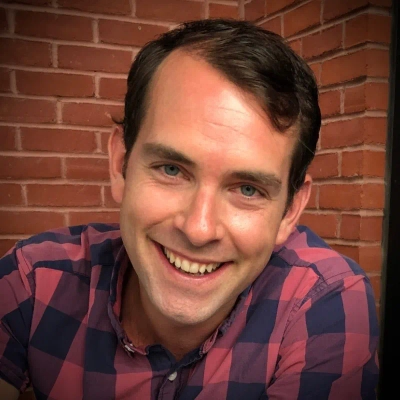16 Common Mistakes Founders Make When Pitching to Vcs
Startup founders often face critical challenges when pitching to venture capitalists, but understanding common pitfalls can significantly improve their chances of success. This article delves into key mistakes to avoid, offering valuable insights from experienced VCs and successful entrepreneurs. By mastering these essential elements of a pitch, founders can effectively communicate their vision and increase their likelihood of securing funding.
- Balance Data with Compelling Narrative
- Demonstrate Operational Resilience Under Pressure
- Articulate Your Unique Competitive Advantage
- Present Clear Financial Metrics and Model
- Show Scalability of Your Operational System
- Address Challenges with Realistic Solutions
- Provide Realistic Growth Plan and Execution
- Transform Pitch into Interactive Dialogue
- Prove Traction with Concrete Data Points
- Emphasize Team Strengths and Values
- Simplify Pitch Deck for Maximum Impact
- Quantify Market Size Before Presenting Solution
- Validate Projections with Customer Feedback
- Highlight Customer Experience Beyond Functionality
- Begin with Customer Pain Points
- Focus on Solving Real Customer Problems
Balance Data with Compelling Narrative
One mistake I see founders make repeatedly is overloading their pitch with data and metrics while neglecting the story behind them. Numbers are important, but without context, investors struggle to connect with the vision or the problem being solved.
I remember a founder who came to us with a 40-slide deck packed with charts and projections impressive on paper, but it felt like reading a spreadsheet rather than hearing a compelling story. We helped them reframe the pitch around the real problem, the journey of their first customers, and why their solution mattered, weaving the metrics in as supporting evidence rather than the main focus. The difference was night and day: investors were engaged, asking questions, and even challenging assumptions, which is exactly what you want.
The key is balance: show you've done your homework, but don't let the numbers overshadow the narrative. If founders can make the investor feel the impact, the rest usually falls into place.

Demonstrate Operational Resilience Under Pressure
One critical mistake I see founders make is neglecting to demonstrate their operational resilience when facing unexpected challenges--something I learned through military service. For example, when pitching Integrity House Buyers, I don't just highlight our property acquisition strategy; I specifically share how we navigated a sudden 30% material cost hike during a flip by leveraging veteran contractor networks and alternative suppliers. Showing investors concrete proof of how you'll pivot under pressure builds real confidence in your execution ability.

Articulate Your Unique Competitive Advantage
One major mistake I've seen is founders not clearly defining their 'unfair advantage'--what truly makes them stand out beyond a good idea. In the competitive Las Vegas real estate market, I quickly learned it wasn't enough to just say, "I buy houses." I had to show how my engineering background allowed for superior data analysis in identifying undervalued properties, or how my early adoption of SMS marketing gave me unique access to sellers. You need to articulate that special sauce that makes you uniquely positioned to win.

Present Clear Financial Metrics and Model
One common mistake I see founders make is failing to show they truly understand the financial metrics of their business model. When I started buying properties in Augusta, I didn't just talk about potential returns - I brought detailed spreadsheets showing acquisition costs, renovation expenses, and projected ROI for each property type. VCs want to see you've thought beyond the idea to how you'll actually generate sustainable cash flow. I recommend creating a one-page financial snapshot that clearly illustrates your unit economics and scaling strategy - this demonstrates you're thinking like an owner, not just an innovator.

Show Scalability of Your Operational System
A major mistake I see is founders neglecting to demonstrate how their operational system scales efficiently. For example, in my early investor conversations for Bright Home Offer, I made sure to explain not just our deals, but how we transitioned from manual cold calling to SMS automation and built a global virtual team. That way, our growth wasn't limited by my personal time, and we could handle eight deals a month without me touching each one. Showing this roadmap to scalability gave investors confidence that our model could multiply beyond a small founder-dependent operation.

Address Challenges with Realistic Solutions
One mistake founders often make is glossing over how they'll handle the real challenges ahead--like regulatory hurdles or market resistance--because they worry it might scare off investors. In reality, acknowledging obstacles and outlining your plan to tackle them shows you're realistic and prepared. In my own pitches for our mobile home company, I've never hesitated to talk about zoning issues or supply shortages. I always follow up with how we've navigated them before, which builds credibility and trust with potential investors.

Provide Realistic Growth Plan and Execution
A mistake I often see is founders overpromising on growth without a realistic plan to get there. Investors want ambition, but they also want to see you've thought through execution. For example, when I started in real estate, I didn't just say, "I'll buy 50 houses this year"--I broke it down into how many leads I needed each month, which marketing channels I'd use, and what my budget was. That kind of grounded roadmap builds far more trust than throwing out big numbers with no steps behind them.

Transform Pitch into Interactive Dialogue
A common mistake is treating the pitch like a monologue instead of a conversation, completely missing the chance to build a real connection. My decade as a teacher taught me that trust is built by listening, not just talking, and it's the same in a boardroom. Instead of rushing through a script, try pausing to ask, "What are your initial thoughts on this?" This simple question transforms a presentation into a dialogue and shows you see the investor as a partner, not just a source of capital.

Prove Traction with Concrete Data Points
A common mistake is pitching like a TED Talk: heavy on vision, light on proof.
VCs don't just want the "why," they want to see the mechanics of "how."
A stronger approach is showing traction with something scrappy: for example, instead of saying "we'll revolutionize the market," show that 57 paying customers stuck around after a trial.
That single data point carries more weight than ten slides of buzzwords.

Emphasize Team Strengths and Values
One of the biggest mistakes I see is founders focusing purely on the 'idea' without adequately selling their 'team' and why *they* are the right people to execute it. When we started Madison County House Buyers, John and I didn't just talk about buying houses; we emphasized our combined six years of experience and our commitment to honesty and integrity. Investors are backing people, not just concepts, so show them why your team's unique skills and values make you unstoppable.

Simplify Pitch Deck for Maximum Impact
One of the biggest mistakes I see founders make when pitching to VCs is creating a pitch deck that's way too wordy and confusing. Many founders, because they're so deeply immersed in their own ideas, try to cram in every detail. The problem is that investors don't have the time or patience for that. VCs typically spend just 3-4 minutes skimming a deck the first time. If your pitch looks dense or unclear, they assume your thinking is just as messy. And before you know it, you've already lost them.
The fix is actually simple. Keep the deck to 10-15 slides, use large fonts and visuals instead of blocks of text, and tell a straightforward story that goes: problem, solution, traction, then ask. A good trick is to test your pitch on someone outside your industry. If they understand it right away, you're on the right track.
Founders who simplify like this usually get much better results. It shows respect for the investor's time, keeps them engaged, and makes your pitch feel focused rather than overwhelming.
Quantify Market Size Before Presenting Solution
One common mistake I see founders make is pitching a solution without clearly identifying the market size and opportunity. In real estate investing, I've learned that showing the scope of the problem is just as important as your fix for it. Rather than just explaining how we buy distressed properties, I now lead with data on the number of homeowners in coastal NC facing foreclosure or dealing with inherited properties they can't maintain. Then I outline our scalable approach to meeting that need. When pitching investors, quantify your addressable market first, then show how your solution captures it—numbers speak louder than concepts.

Validate Projections with Customer Feedback
One common mistake I see founders make when pitching to VCs is overestimating their market size and financial projections without proper validation. I learned this lesson the hard way with my first business, where I presented inflated numbers about margins and monetization potential without creating solid financial forecasts or validating my assumptions with actual customers. To avoid this mistake, I suggest spending time gathering real customer feedback and creating conservative financial models based on verifiable data before your pitch. Investors appreciate honest, well-researched projections much more than impressive but unrealistic numbers.
Highlight Customer Experience Beyond Functionality
A common mistake I see is founders forgetting to pitch the customer's *experience* with the product, not just its function. Drawing from my 15 years in hospitality, I learned that success is about creating memorable moments, a principle I apply to my Airbnb properties today. Instead of only explaining how you solve a problem, show investors how your solution makes the customer feel valued and delighted, because that's what builds true brand loyalty.

Begin with Customer Pain Points
Founders frequently begin product development without first explaining the problems their solution addresses. In one instance, a founder presented his product features and UI slides to the audience for ten minutes but failed to show how his solution addressed any real need. The investors lost interest in the presentation after the founder began explaining the problem.
The solution requires basic steps to begin with the customer pain points. It's crucial to show your audience the current state of their world through their perspective before introducing your solution as a powerful answer. One company achieved term sheet success through their prototype despite its poor quality because investors understood the product's target audience and its essential value.
Focus on Solving Real Customer Problems
One of the most damaging mistakes founders make when pitching to venture capitalists is developing products primarily to appeal to investors rather than focusing on genuine market value and customer needs.
This mistake often manifests as founders pivoting toward whatever technology or market segment is currently "hot" with VCs—whether that's AI integration, blockchain applications, or other trending technologies—without considering whether these additions actually solve real problems for their target customers.
How to Avoid This Mistake:
Instead of chasing investor preferences, successful founders should concentrate their energy on developing products that deliver authentic value to the market and genuinely help users solve critical problems.
For example, at DataNumen, rather than adding flashy features to impress investors, we've remained laser-focused on what our customers actually need: reliable, effective data recovery solutions. When businesses lose critical data, they don't care about the latest tech trends—they need software that works consistently and recovers their files completely.
This customer-first approach not only builds a more sustainable business but also creates a more compelling pitch to VCs. Investors can recognize authentic market demand and sustainable business models. When you can demonstrate real customer traction and measurable problem-solving impact, you'll attract the right investors who understand and value your market focus.
The key is remembering that while you're pitching to VCs, you're ultimately building for customers. Stay true to solving real problems, and the investment will follow.





